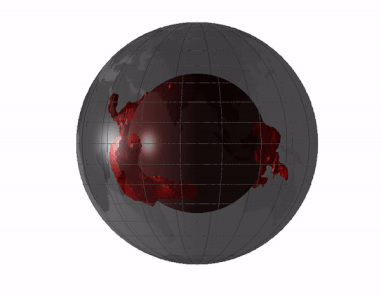FYI, this simulation model is important and the article here refers to atmospheric loss during a giant impact event. "Earth's moon is believed to have formed about 4.5 billion years ago following a grazing impact of a small planet about the size Mars with Earth. The debris from this impact accumulated in orbit around Earth to form our moon. The new simulations suggest that this event may have stolen between 10% and 50% of early Earth's atmosphere. "
Here is the NASA ADS Abstract and arXiv PDF report. 'Atmospheric Erosion by Giant Impacts onto Terrestrial Planets: A Scaling Law for any Speed, Angle, Mass, and Density',
https://ui.adsabs.harvard.edu/abs/2020arXiv200704321K/abstract
"1. INTRODUCTION Terrestrial planets are thought to form from tens of roughly Mars-sized embryos that crash into each other after accreting from a proto-planetary disk (Chambers 2001). At the same time, planets grow their atmospheres by accreting gas from their surrounding nebula, degassing impacting volatiles directly into the atmosphere, and by outgassing volatiles from their interior (Massol et al. 2016). For a young atmosphere to survive it must withstand radiation pressure of its host star, frequent impacts of small and medium impactors, and typically at least one late giant impact that could remove an entire atmosphere in a single blow (Schlichting & Mukhopadhyay 2018)."
These studies indicate that the proto-Earth could lose 60% of its early atmosphere too. Some impacts remove all of the early atmosphere. How the proto-Earth continued to gain an atmosphere after the postulated giant impact with Theia is not clear to me, consider that the gas in the accretion disk is now depleted by the time of Theia impact. Growing the proto-Earth to its present mass and size needs explaining too. Other simulations get very different results when using low mass stars like red dwarfs. 'Ejection of close-in super-Earths around low-mass stars in the giant impact stage',
https://ui.adsabs.harvard.edu/abs/2020arXiv200714039M/abstract, "Earth-sized planets were observed in close-in orbits around M dwarfs. While more and more planets are expected to be uncovered around M dwarfs, theories of their formation and dynamical evolution are still in their infancy. We investigate the giant impact growth of protoplanets, which includes strong scattering around low-mass stars..."
A rich area of study with enormous kinetic energies and the potential for much destruction of proto-planets and the proto-Earth too





